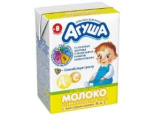
Introduction
All designations regardless of whether these are registered or otherwise protected in Russia, or, instead are used in Russia without such registration/ protection may be recognized to be well-known.
I. Procedure.
In order for a mark to obtain a well-known status it has to be recognized as well-known by filing a special application to be subsequently examined by the Russian PTO. The application is considered by the Board of experts of the Russian PTO. Upon receipt of the application the Russian PTO appoints the hearings at which the matter is to be considered on merits. The applicant is invited to take part in the hearings.
There is a separate Register of well-known marks. Once the mark is recognized to be well-known the Russian PTO issues a respective registration Certificate which contains information about the mark itself, the goods for which it enjoys well-known status, the date at which it became well-known in Russia and other relevant information.
A trademark must meet certain requirements in order to become well-known.
First of all it has to be distinctive. The distinctiveness may be inherent or acquired.
Furthermore, the owner of such trademark must demonstrate intensive and continued use of his mark as a result of which the mark became famous in Russia among the respective range of consumers in relation to the goods and services produced/rendered by the brand owner. The brand owner is entitled to demonstrate the use of his mark on a worldwide scale, however, special attention will be paid to the evidence of use on the Russian market. The use must be so intensive as to result in a tight link being created in the consumer’s mind between the mark itself, particular producer/service provider and particular products/services.
If the mark is used to designate special products having very limited range of consumers it would suffice to show that the mark has become famous among the respective range of consumers only.
When filing an application it is imperative to indicate the date on which the mark according to his owner became famous in Russia. This date is also called “priority of a well-known mark”. The priority of the well-known mark may predate the filing date of an application for recognition of a trademark as well-known or even the registration date if a registered trademark is sought to be protected as a well-known mark. This makes it possible to recognize a trademark as well-known with retrospective effect.
It is crucially important that this date should predate priority date of any similar marks covering similar goods owned by third parties recorded on the Register. Otherwise, an application for recognition of a trademark as well-known is supposed to be refused.
The application for recognition of a trademark to be well-known is to be accompanied with the evidence of fame of the mark. The fame of the mark has to be confirmed both as of the priority date of the well-known mark and the date on which the application for recognition of a trademark as well-known was filed. The Civil Code does not specify what kind of evidence would be appropriate in such cases. However, administrative regulations which describe the recognition proceedings in details provide for the recommended list of documents and information which could be filed in support of the application.
In particular, it is advisable to submit information about the scale and length of use of the mark both worldwide and especially in Russia to be confirmed by annual financial reports, declarations etc. as well as information about the value of the mark, approximate number of consumers, information about awards, exhibition activities involving the mark, information describing amount of expenditure invested in promotion of the mark on the Russian market, other information attesting to the wide spread awareness vested in the mark. These could be contracts, shipment documents, advertising and promotional materials, publications in media and other relevant documentation and materials.
The most valuable evidence upon which the application could be based is the opinion poll/survey result which should demonstrate significant proportion of Russian consumers being familiar with the brand and its owner.
There is no comprehensive list of documents and evidence to be filed in support of the application and everyone decides what evidence exactly could be qualified as relevant depending on factual circumstances concerning use of the brand .
The Russian PTO is quite strict in assessing the evidence of brand awareness submitted by the applicant. In particular, the Russian PTO, as a general rule, requires that the applicant’s documents and materials should attest to the brand awareness being so broad as to create a tight link in the consumer’s mind between the brand itself, particular trader and specific goods bearing such brand. Such tough requirements may lead to refusal decisions especially in those cases, where applicants fail to persuade the Board in that consumers know very well manufacture of the branded goods. However, in some cases refusals are not very well-grounded and may be appealed to the IP Court and the current Court practice suggests that the Court applies more liberal approach taking note of all the factual circumstances in the aggregate. In other words, the refusal, if made, should not be a great concern for the brand owners as there is a real opportunity to try to succeed at the Court stage, if necessary.
Below is some brief description of the current trends in the administrate and court practice associated with well-known marks
II. Possible grounds for refusal.
Marks are normally refused in granting well-known status due to lack of evidence of broad brand awareness and/or lack of strong association between the brand and the applicant in the consumer’s mind.
One of the main reasons for refusal is the lack of intensive use. If the mark is intended to be used for mass consumption goods and services a large scale and wide spread use is normally required.
Other grounds include weakness of the mark and use in a different manner. To better understand the current trends concerning this issue it is worth describing briefly the recent cases from the Russian practice.
The first case relates to a trademark  which represents design of a gasoline filling station. The mark covered motor fuel in Class 4 as well as service station services in Class 37. The mark was considered quite weak in terms of individualization requirements as the dominating elements of the mark such as the shape of the station and the color were deemed non-distinctive. Moreover it was established that the only distinctive element of the mark, namely the logo element
which represents design of a gasoline filling station. The mark covered motor fuel in Class 4 as well as service station services in Class 37. The mark was considered quite weak in terms of individualization requirements as the dominating elements of the mark such as the shape of the station and the color were deemed non-distinctive. Moreover it was established that the only distinctive element of the mark, namely the logo element  , when used, is placed in different positions on the applicant’s stations and the applicant’s stations are quite different in terms of the design and composition solutions from the applied one (e.g.
, when used, is placed in different positions on the applicant’s stations and the applicant’s stations are quite different in terms of the design and composition solutions from the applied one (e.g.  ,
,  ,
,  ) what made it possible to claim that the mark was used in a different manner.
) what made it possible to claim that the mark was used in a different manner.
Based on the above findings the Russian PTO dismissed the applicant’s claims and ruled to refuse granting the well-known status to the said mark.
However, the dismissal decision was successfully appealed to the IP Court which came to conclusion that the evidence submitted by the applicant was not studied thoroughly by the competent authority. According to the Court, although the evidence related to the different versions of the mark, the difference between the mark as applied and the versions, for which the proof of use was collected, was inessential. The Court further argued that consumers were likely to perceive the applied mark as a fresh version of the marks that were intensively used on the market rather than a completely new brand, and hence brand awareness and recognition attributed to the old versions of the mark should be applicable to the current version of the mark which was sought to be protected.
To sum up, the refusal decision was annulled and the case was brought for re-consideration before the Russian PTO and this time it resulted in a favorable decision being issued and the mark was recognized well-known in Classes 4 and 37 as a result of its intensive use. Protection was granted as a whole subject to disclaimer of the shape of the service station based on non-distinctiveness grounds.
This case is a first one which dealt with the so-called non-traditional marks (trade dress) and which was considered several times passing through the administrative and judicial instances before the favorable decision was issued.
Another interesting case which is worth mentioning is the one related to the brand  (AGUSHA in Cyr.). This brand is quite popular in Russia and designates the food for babies. The brand owner made an attempt to obtain well-known status for its mark and the matter was originally considered with unfavorable outcome for the well-known mark owner. The application was filed in respect of food for babies in general for which the mark was actually used in a different color spectrum such as
(AGUSHA in Cyr.). This brand is quite popular in Russia and designates the food for babies. The brand owner made an attempt to obtain well-known status for its mark and the matter was originally considered with unfavorable outcome for the well-known mark owner. The application was filed in respect of food for babies in general for which the mark was actually used in a different color spectrum such as  or
or  . The Board considered the applied specification to be quite broad and vague as it might include various product types(porridge, juices, milk products and others).
. The Board considered the applied specification to be quite broad and vague as it might include various product types(porridge, juices, milk products and others).
The fact that the mark was used in a different color additionally worsened the situation and the application was rejected.
Recently the brand owner made yet another attempt to get its mark protected as a well-known mark. This time an application was filed for the combined mark . (Stylized in blue color) featuring specific types of food for babies such as milk and dairy mixtures (supplementary food), porridges both in liquid and solid form, meat and fruit purees, fruit juices, compotes, drinking water and others.
. (Stylized in blue color) featuring specific types of food for babies such as milk and dairy mixtures (supplementary food), porridges both in liquid and solid form, meat and fruit purees, fruit juices, compotes, drinking water and others.
The brand owner was seeking to recognize his brand as well-known as of 2016. In support of his claims the evidence of intensive use of the mark in Russia before 2016 was submitted. The evidence, included, inter alia, shipment documentation confirming supply of the branded goods in various Russian regions for the re-sale by the largest Russian retailers.
One of the key pieces of evidence used in support of the application was the report on the results of the brand awareness survey that was conducted among the respective range of consumers (target audience) and which demonstrated strong brand awareness. All those factors and fresh pieces of evidence eventually culminated in the brand which is actually in use on the market being recognized well-known.
Another possible ground for refusal is a lack of evidence of notoriety of the applicant. In one of the recent cases dealing with recognition of a trademark “AVITO” as well-known in Russia (Avito is one of the largest online classified bulletin board offering various goods and services for sale in Russia) in the name of a Sweden based company Avito Holding AB the Russian PTO refused to grant well-known status to the mark. The Russian PTO made it clear that the applicant allegedly failed to prove that the mark became famous due to the trading activities of the applicant and came to be associated in the consumer’s mind exclusively with the applicant and its business. The IP Court, however, did not agree with that position and instead insisted on the fact that the crucial point in establishing well-known status is the fame of the mark in connection with specific goods for which protection is sought. Moreover, according to the Court, consumer should clearly understand that the goods bearing the mark originate from the same source of goods, but there is no need for consumer to identify/associate the goods with a particular entity. The source of goods should be interpreted quite broadly to include the applicant/rightholder and any other related/affiliated entities or persons.
The Court further argued that the evidence submitted by the applicant demonstrated intensive and long standing use of the mark by the applicant and related companies what made it possible to believe that the mark became famous in connection with particular services having the same commercial origin and hence is eligible for protection.
The cases described above suggest that the refusal decisions made by the Russian PTO can be successfully appealed to the IP Court and according to the latest practice approximately 70% of refusals are successfully overturned in Court based on lack of thorough examination of evidence filed by the applicant and wrong interpretation of the law in that there is no need to prove awareness/notoriety of the applicant.
III. Pros and Cons.
As shown in the article well-known marks are a special category of trademarks which has its own advantages and shortcomings.
To begin with the main advantages of a trademark enjoying well-known status.
The main benefit of a trademark enjoying well-known status in Russia is that the brand owner can obtain broader scope of protection which in some cases may extend to dissimilar goods and services. These are the cases where there is a real risk that the use by a third party of the same or similar designation will be associated in the consumer’s mind with the owner of the well-known mark and such use is capable of damaging true owner’s reputation and lawful interests.
Another benefit to have a well-known trademark is that such status facilitates fighting against infringers, since when we deal with strong brand awareness attributed to well-known marks it is easier to prove the risk of confusion as to the commercial origin of goods and the damage that may be caused as a result of such confusion.
Further, the law provides for unlimited period of life of the well-known marks without any need to renew the marks.
Finally, it goes without saying that it is a matter of prestige. Moreover, the value of the well-known mark is normally high and this could serve a very valuable intangible asset that in turn notably increases capitalization of the brand owner.
On the other hand the procedure is quite costly, complicated and time consuming. That is why relatively small number of trademarks have been recognized well-known so far. The total number of currently recorded marks is 263 . Most of these marks are Russian brands. However, foreign brands can also be found in the list of trademarks that achieved the well-known status, for instance :
 (for goods in Class 4),
(for goods in Class 4), ![]() (for goods in Class 25) and
(for goods in Class 25) and  (for goods in Classes 7 and 11).
(for goods in Classes 7 and 11).
IV. Conclusion.
The procedure of recognizing trademarks as well-known is complicated and time consuming as it requires a considerable amount of evidence of brand awareness to be compiled and submitted in support.
Despite those complex aspects the benefit of obtaining well-known status is obvious – the brand owner seeks broader scope of protection that eventually helps to improve enforceability of the mark and turn it into a valuable asset. For this reason we can see some increase in the number of cases related to recognition of trademarks as well-known over the last few years and for many brand owners this becomes one of the most effective and key elements of the brand protection strategy as a whole.


